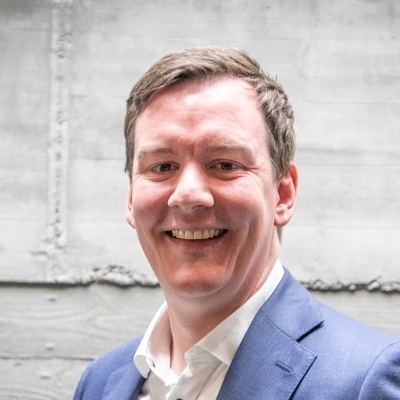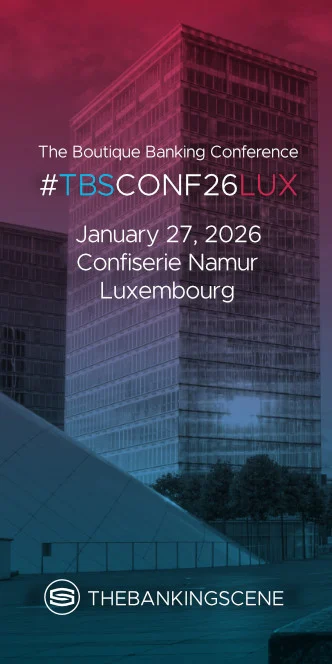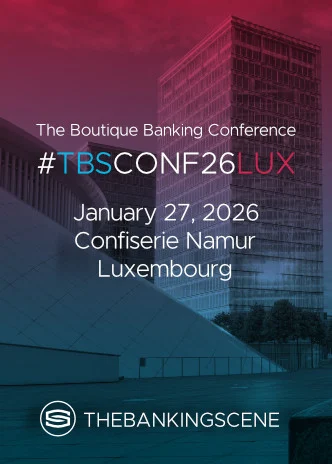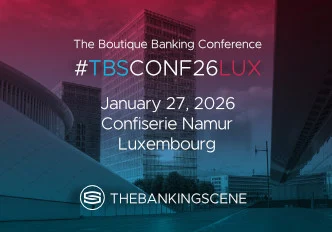
Insights & Opinions
How video banking changed the way ABN AMRO interacts with its clients
Fri, 23 Oct 2020

One of the most talked-about banking topics in the mainstream press must be the decline in bank branches. Being such a vivid discussion, we decided to pay special attention to it.
The Netherlands is not exactly known for its density of bank branches: over the last 20 years, the number of branches reduced from 6k to only 1k for the whole country. So for an inspiring view on the matter, we decided to invite an executive from one of the Netherlands’s big-4 banks: ABN AMRO.
Our special guest Klaas Ariaans joined us for a very open dialogue at yet another successful and insightful Afterwork session. He explained to us how they transformed their services, resulting in higher NPS and branch visits becoming a rarity in client advice. Change comes with resistance and challenges, so we also spoke about the learnings from this transformation, which he was eager to share.
2016: pioneers in webcam advice
Well before COVID-19, in 2016, ABN AMRO started with the first experiments in answer to two essential questions for the future of their personal banking:
- How will personal contact look like in the future?
- How will we organise ourselves in this new world?
They believed that personal banking should be available anywhere, anytime, any place. In other words: let the bank go where the client is instead of asking them to come to the branch.
So they started experimenting with video banking, “webcam advise”, as it was called back then. As usual: the biggest challenge is the human element in this kind of change. This paradigm shift in the way the bank advised its clients was met by resistance. How do you convince people that the way they have been working for 200 years, may not be the right one anymore?
People have the vast belief that what they do is the best way possible. Relationship building includes an informal introduction with a coffee before talking about the financial situation of the client.
Klaas: “Video banking doesn’t sell itself in the beginning. People wonder whether it is safe. Is it convenient to use? Does the equipment work? How is the connection?” So ABN AMRO needed to guarantee to the client that they created a new way of working that is as efficient and effective, or more, as when this client would be walking in a branch.

Clients that adopted video banking were very positive about it. They loved the idea that they could reach a bank advisor anywhere, anytime, resulting in an excellent NPS (Net Promoter Score).
Managing employee expectations
Klaas: “When we started video banking, we were struggling internally; everybody had an opinion on it. Then the new CEO came in and visited one of the branches. At that moment we had a video conversation going on with a 95-year-old lady. The CEO put himself next to the advisor, and the lady was supportive of this new way of communicating. She loved that she could stay on her couch and still do business, with an advisor in front of her. The only thing she resented was that she needed to go to the branch for the signature. This experience helped our CEO and the rest of management to understand that this may be the new way of communicating with clients.”
The success of video banking increases the pressure on branches and the need to rationalise the branch network. How do you explain branch closures and the migration to video banking?
Klaas: “What I try to do is be as transparent as possible and explain to the employees what the future will look like. That context helps people to get their minds straight in what is happening and how they should cope with the new situation.”
He acknowledged that change also creates opportunities. New ways of working create new jobs. One of the new roles they invented is the Financial Care Coach. These people support their clients that are being challenged by digitalisation, whether those are the elderly, non-digital or vulnerable ones.
The organisation supports people in reorienting their careers. So to assist the employees as much as possible in the many reorganisations, ABN AMRO invested heavily in, for example, the Personal Banking Academy.
Managing client expectations
We know: in the old days, everybody had their own personal account manager.
We also know the dilemma: people want excellent service from their bank, but they don’t want to pay too much for it, which makes the personal account manager for a regular retail client no longer a viable solution.
Klaas: “Luckily today, Dutch clients are more convinced by the fact that we have a team available for answers when they need it the most, rather than a personal account manager that is not always available.” Banks start to see a shift in the way people think about their banks. They still love a human connection, but they also like the idea of getting the right answer whenever and wherever they need it the most.
Klaas: “Looking at my bank, for the last 6 to 7 years, I closed many branches, and our experience is that people don’t tend to leave the banks right away. I think that, maybe because we closed the branch, they think about how they should adopt digital or that they should look for a solution for questions on their financial situation.”
People that lack the required digital knowledge can get support to make sure they are not left behind. The Financial Care Coach is an example of that.
Won’t this massive shift from human contact to video contact have negative consequences? Someone in the audience wondered whether banks don’t risk more shopping behaviour from consumers once the personal relationship ceases to exist.
Klaas does not believe this will be the case.
If your prices remain competitive, it is his conviction that service may still be decisive for the client: “If you think about buying a house, we believe that being there at the right time and the right place in the most convenient way is a huge differentiator, especially if you have human contact available anytime.”
2017: video banking going from ‘nice to have’ to ‘need to have’
2017 was a pivotal year in the success of video banking. This time it was not bank-driven but market-driven. Klaas: “In 2017, the mortgage market exploded in the Netherlands. Everyone wanted to know as soon as possible whether they could buy their dream house. To keep up with customer demand, we gave them a choice:
- seeing an advisor in a branch, which would take at least a week
- seeing an advisor online, giving you the same experience the same evening
99% preferred option 2.”
The proof of the pudding is of course in the eating: the clients loved it. These were the best months ever for ABN AMRO’s mortgage business.
Today, and already before COVID-19, video banking is the highest rewarding channel within ABN AMRO according to Klaas, with a transactional NPS, based on the conversations of advisors with their clients in some weeks of +50. Comparing the NPS of a conversation in a branch versus video banking would lead to an even greater difference.
Video banking has tangible advantages over in-branch personal banking. Take the example of a client that has an appointment with a mortgage advisor and in the middle of the conversation, he has a question on his investments. Via the ConnectMe platform, the mortgage advisor can invite his colleague in the same conversation with one click on the button.
In real-time, a customer can have all their questions answered. These kinds of options are unavailable in the branch, where every advisor has their own agenda to manage.
This digital convenience is not only a time-saver for the client but also an instant satisfied.
2020: COVID-19 accelerates digital adoption
The years of experience with video banking made ABN AMRO’s customer service a lot more resilient in times of a crisis like today. The personal advisors knew how to serve their clients from a distance.
To make sure they can service more clients online, the bank decided to triple the number of Financial Care Coaches to lift the level of digital and financial literacy of their clients.
Klaas: “Before COVID-19 arrived, we already achieved to have 60–70% of all our complex advisory meetings via video banking. When COVID-19 hit, we reached 98%. Today we are at 88–89%, which is still really high. We believe that this level will remain.”
The most significant change resulting from COVID-19 is that digital banking has become widely accepted and that the evolution of branch closures is being accelerated even more than before.
Andrew Vorster joined the conversation with an anecdote from a CEO of a Portuguese bank that participated in one of his panels some weeks ago saying that the biggest thing they have seen is the huge amount of people they would call older people that have now transitional to online and digital banking.
The COVID-19 left branches empty, and they were closing branches because these elderly embraced digital banking more than any other category that they have seen.
Klaas: “If you help and support people with new exciting tools, they get enthusiastic about it, and they will embrace it. Before COVID, we organised 600 events/year to educate people on how to do your finances digitally, and it works really well.”
Video banking and the power of AI
On the long-term, ABN AMRO believes that Artificial Intelligence will completely transform the personal banking experience of retail customers. Dennis de Reus, Head of Artificial Intelligence at ABN AMRO stated in an article: “Thanks to the availability of data and advances in machine learning and analytics technologies, every customer will be able to benefit from a highly personalised experience that spans across their entire digital and physical lives.”
Klaas: “The possibilities are limitless. Everybody within the industry and especially the financial sector is thinking about it. We have several departments working on AI and robotics. To be honest, at this point, we are experimenting.”
We wrote it before, truly personalised banking is tough to realise, and it requires a step-by-step approach. Instead of immediately developing the Holy Grail, the completely automated banking experience, Klaas believes that a hybrid in-between is better at this stage.
It is a scenario where technology augments human advice in the communication between the financial advisor and the client. AI will make the right information available to the employee at the right time. A machine can make suggestions, but the final decision to apply the recommendations is up to the employee: the combination of human interaction with digital convenience.
This information can be both on financial products and customer insights. People that have been visiting the website or app leave a digital footprint while screening the digital bank platform. When they have an appointment, this information is making a big difference, with conversion rates they have never seen before.
Klaas: “This shows us that being there at the right place and the right time when they most need you is the new gold. That is what we are experimenting with.”
The process of, for example, mortgages remains hard to explain to clients. To get the client to the stage of signing the contract is even more challenging. These decisions are life-changing for a retail customer. Yes, they like to investigate the possibility themselves online, but before signing, they still prefer to see a human being.
Klaas: “It will take a while before you have your personal banker in your pocket. We are not there yet, by a long shot. But I’m a practical guy. I believe that before we find that Holy Grail, we need to have an in-between solution to make sure we get as close as possible to the fact that you have a personal account manager.”
Conclusion
Klaas: “Transformation creates difficult situations. I think in the end, retail will become completely digital, one way or the other and we will have humans available, but not as many as we have today.”
This kind of testimonials on successful experiments with video banking shows that if you have the commitment, and the drive to make it a success, people will adopt it. From then on, it is just a matter of finding the right identity and authentication techniques to make signing the deal completely seamless and bank branches will become redundant, perhaps soon than later.
The future role of branches? It will be another one than the simple client advisory.



